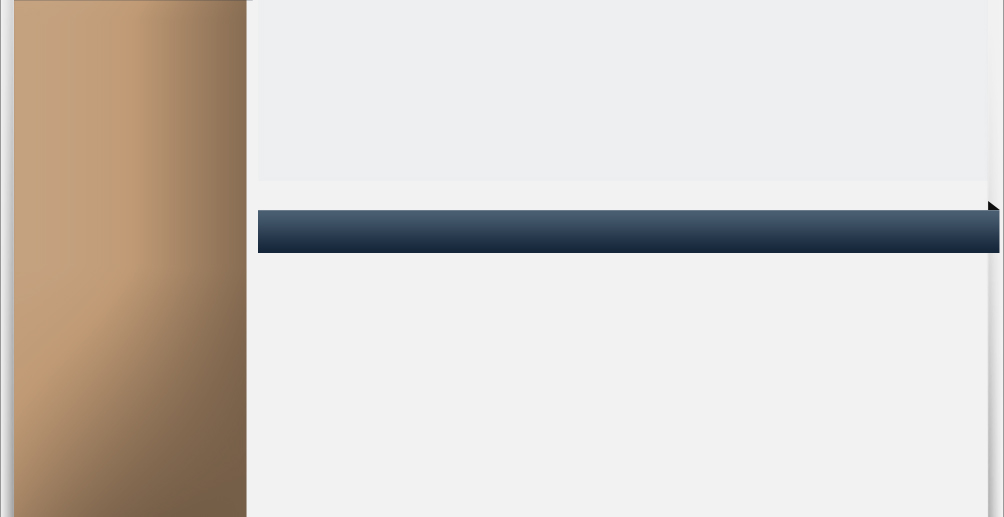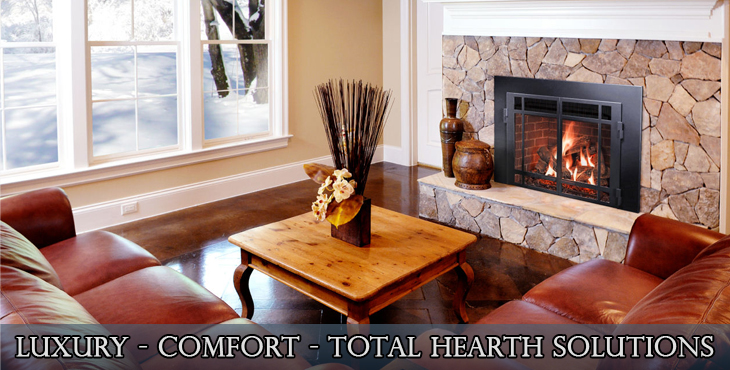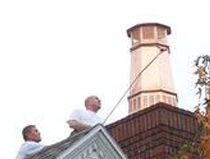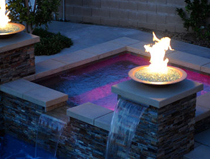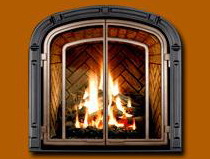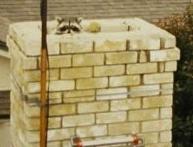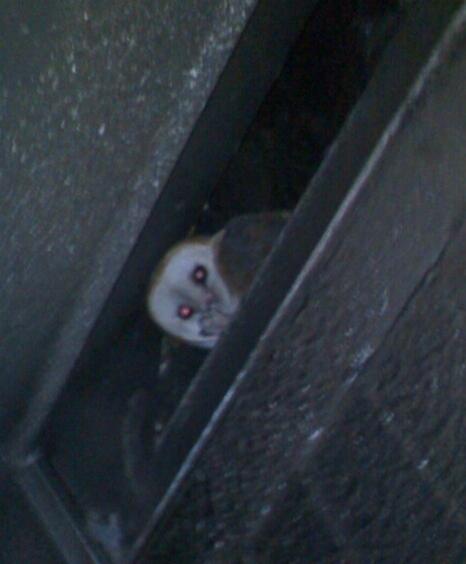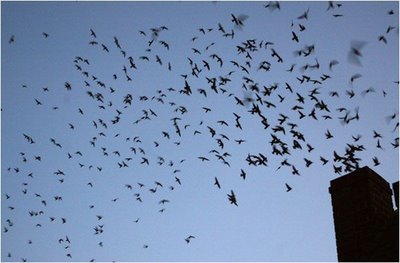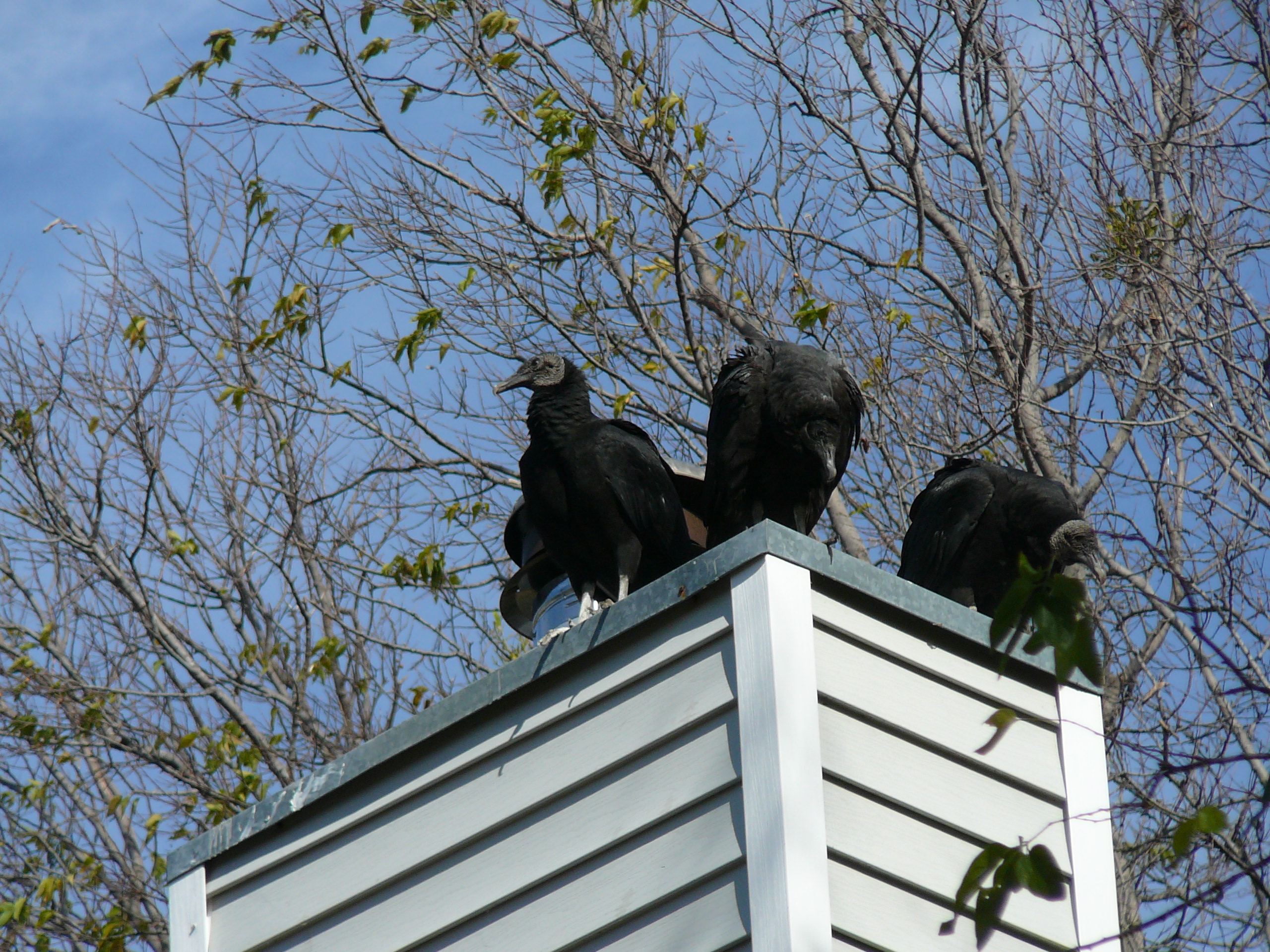FAQ
What advice do you have for a customer looking to hire a chimney service?
Go with a pro! Look for "NFI Certified" or "CSIA Certified" professionals. Beware of imitators.
There are two reputable certification agencies in the U.S. recommended by fireplace and chimney manufacturers, code officials and local and state government agencies: the National Fireplace Institute (NFI) and the Chimney Safety Institute of America (CSIA). Many states actually require licensing for fireplace installers and NFI certification is a requirement for obtaining this license. Unfortunately, Texas is one of the few states that does not require licensing.
The CSIA trains and certifies chimney sweeps, while NFI training is geared more torward hearth system planners, installers and technicians. Training and examination is very thorough and all CSIA and NFI Certified professionals are required to undergo continuing education to maintain certification. Most fireplace manufacturers endorse the NFI and recommend that their products be installed and serviced by NFI Certified professionals. The NFI is commonly recognized as the most reliable source of training for competent installers and technicians.
If someone claims they are certified, you should ask, "certified by whom?" There are some organizations out there offering so-called "certification" to chimney service companies, sometimes for free, which involves limited "training" materials and zero actual classroom time, with an "open book" test. Because Texas does not require licensing, there are some chimney service companies that ignore the importance of proper training and certification of staff, preferring to cut corners to save money. Just because a chimney service advertises as "master" or "certified professional" it doesn't mean they are competent.
Why take chances or risk the safety of your home or family? Go with a pro!




We carry the distinction of NFI Certified Master Hearth Professional, the highest level of certification available in the hearth industry. Verify our credentials here: http://nficertified.org/pages_consumers/consumers-4.html
How often should I have my chimney cleaned?
The National Fire Protection Association (NFPA) recommends having your hearth system inspected annually by a certified professional and cleaned/serviced as needed. On average, most chimneys need to be cleaned about every one face-cord of wood burned. This varies with type of wood burned, how well "seasoned" the wood is, the type of fireplace/stove and conditions of use. Gas logs and gas fireplaces also require regular service and maintenance to ensure they are operating properly and safely.
Need a chimney cap? Contact us for a free estimate.
Why should you have your chimney cleaned regularly?
According to the NFPA, in 2005, heating equipment was involved in an estimated 62,200 reported U.S. home structure fires, with associated losses of 670 civilian deaths, 1,550 civilian injuries, and $909 million in direct property damage. The estimated home heating fire total is roughly one-fourth (26%) the size of its peak in 1982, and associated deaths are down by 44% from their 1982 peak.
Chimneys and chimney connectors accounted for the largest share of fire incidents (36% in 2005), because of the impact of confined fires. Confined fires accounted for 93% of total 2005 home chimney or chimney connector fires. Excluding confined fires, chimneys and chimney connectors accounted for only 6% of 2005 home heating fires.
The root cause of most of these losses is that most U.S. homeowners are unaware those chimneys are an integral part of a home heating system and that they require regular evaluation and maintenance.
The threat of chimney fires and unsafe indoor air quality conditions can be greatly reduced, perhaps even eliminated, if homeowners only understood that chimneys are active home operation systems which require regular maintenance. Contact us to learn more about our chimney and fireplace cleaning, inspection and maintenance services.
Do I need a chimney cap?
Absolutely. The chimney cap serves three main purposes:
1) To keep water out of the flue. Water coming in the chimney will cause your damper to rust and will saturate the smoke shelf and soak into the back wall of the firebox. This water mixes with fly ash (ash and water makes lye, a solvent) and creosote (acidic). When heat is then applied to the saturated masonry, the moisture expands and causes the firebrick to deteriorate and crack. It is very important to keep the inside of your chimney dry to prevent costly repairs. Most chimneys that are uncapped will show signs of deterioration within a short amount of time. Look for water stains, cracks and failing mortar on the back wall of your fireplace.
2) To "arrest" sparks. The mesh or louvered screening on your cap catches sparks before they can reach your roof and put your home at risk of fire.
3) To keep birds and animals out of the chimney. The smoke shelf of your chimney makes a great place for squirrels and raccoons to raise a family and avoid the Texas heat. They bring with them mites, fleas, and other parasites. Chimney swifts, which are migratory chimney nesting birds, find chimneys to be a natural habitat. They are a protected bird by order of the Migratory Bird Act and play a vital role in keeping our mosquito population under control. However, they are a nuisance and potential health hazard when they live in your chimney because of the noises they make, the parasites they host, and the dangerous bacteria contained in their feces (inhaling the dust from contaminated, bird feces can cause serious health problems, like a deadly lung infection know as Histoplasmosis).
Why is my fireplace smoking or why isn't my chimney drawing up the smoke?
There are a number of reasons this problem can occur. Sometimes it's a combination of issues. Common reasons include:
- Chimney and/or fireplace are not constructed or installed properly.
- Chimney is not tall enough. The top of the chimney should be two feet taller than anything within ten feet. If the chimney is the proper height wind blowing across the top of the flue will create the "Venturi effect" which induces draft. A chimney that is not tall enough can experience "wind loading", this is where wind gusts or turbulence causes air to be forced down the chimney's flue. Proper chimney height will, in most cases, prevent wind related down drafts. In some cases the topography of the home site can cause "wind loading", even if the chimney is tall enough. Look for tall trees, hills, mountains, or neighboring homes that could be causing unconventional wind patterns around the chimney.
- "Cold Hearth Syndrome" - This is caused when the fireplace cannot maintain high flue temperatures. A cold chimney does not draw, just as a hot air balloon will not fly without hot air. This problem is common with chimneys that are located on an exterior wall of the house, especially when the chimney or chimney chase is not insulated. If your draft problems occur mainly at the beginning or end of the burn cycle this is a likely cause of the problem and is a common draft performance cause of many solid fuel burning appliances.
- An obstruction (Santa, bird/animal nests, creosote build-up, an improperly designed or installed chimney cap, is your damper fully open?, etc.)
- Home pressure issues - the chimney is unable to compete with other negative pressure sources in the house (examples of this include: clothes dryers, bathroom and kitchen exhaust fans, vented gas appliances, central vacuum systems, can lighting, leaky attic accesses, etc.).
- "The Stack Effect" - Just as draft is created in chimneys by the buoyancy of the hot gases, a form of draft is created in houses because of the difference in temperature between the air inside the house and the outside air. The warm air inside the house tends to rise because it is less dense and lighter than the outside air. The tendency of the warm house air to rise results in pressure differences at various levels in the house. The pressure in the basement and lower levels of the house will be less than the atmospheric pressure. This effect is similar to the low pressure at the base of a chimney. In upper levels of the house the pressure will be higher than the atmospheric pressure as the rising air pushes against the ceiling. At some point between the high and low pressure zones, the pressure will be neutral. This point is called the neutral pressure plane. These variations in pressure is called the stack effect. The taller the house is, the greater the stack effect.The stack effect in your house can make a considerable difference in the venting performance of a wood burning appliance. Basement wood burning appliance installations are the most susceptible to problems caused by the stack effect since they are located at the lowest point in the building. Wood burning appliances installed in basements commonly operate in this negative pressure environment and are the most susceptible to back-puffing problems.In general, appliances and chimney openings located below the neutral pressure plane of the house must work against the negative pressure induced by the stack effect. Conversely, appliances and chimney openings located above the neutral pressure plane are assisted by the positive pressure. Increased chimney height can sometimes overcome the stack effect on a wood burning hearth system.
- Air-flow in the home can force air movement into the fireplace. This is a common problem in multi-sided fireplaces. Look for ceiling fans, air returns, etc. that could be causing this.
- Operator error. Something as simple as the placement of the grate or the position of the glass doors (usually fully open is correct with an open hearth) can cause smoke to come into the room. Be sure that your firewood is properly seasoned. Wet firewood will not create the heat needed to establish chimney draft.
How did an animal get into my fireplace if my damper was closed?
Birds, raccoons, squirrels, snakes, and other animals can easily enter your chimney if it is damaged or not properly capped. When an animal gets inside your chimney and discovers it has become trapped, it will do whatever it can to get out, often causing quite a ruckus.
A closed damper will not be enough to keep the trapped critter from working its way down into the fireplace. Most pre-fab or builder-grade fireplace dampers will hardly keep cold weather out of your home, much less keep a soot-covered, raging wild animal from entering your fireplace and possibly escaping into your home.
For this reason, it is strongly recommended to keep your chimney well maintained, which includes making sure it is fitted with a proper chimney cap. Annual inspection and maintenance of your chimney and fireplace by a certified chimney professional is the best way to keep it safe and working properly. A certified chimney professional can identify and correct potential problems, often before it becomes serious or turns into a costly repair. In many cases animal removal can be much higher than the cost of a chimney cap, especially if the animal comes into your home covered in soot and fleas. A carpet/upholstery cleaning service might also be necessary in such an event.
Click "products" at the top of the page to view chimney caps we have available.
Should I buy a fireplace or wood stove online?
We recommend never buying a fireplace or stove online. Most hearth products manufacturers will not honor the manufacturer's warranty if the hearth system was not purchased and installed through an authorized dealer.
Sadly, there are one or two "rogue" dealers selling hearth systems on the internet because the law in their state protects their right to do so, regardless of hearth manufacturers' policies about such practices. These shady businesses advertise extremely low prices, which are actually at or below cost; however, they make up their profit on the back end by charging astronomical shipping rates. To the unsuspecting consumer it may seem like a good deal, but the actual savings amounts to very little, if any. Then there is the problem of finding a fireplace installer willing to install it. This might prove difficult for a number of reasons including the voided warranty. The fireplace technician might not be willing to guarantee or assume responsibility for the operational integrity of a fireplace or stove that was purchased elsewhere.
We sell only quality hearth products and stand behind everything we sell with our own service warranty in addition to the manufacturer's warranty.
Buying a new fireplace or stove is an important investment in your home. Always trust an NFI Certified professional to guide you through the whole process, from selecting the right product for your specific application to installing and servicing the hearth system.
Should I buy a fireplace, wood stove or gas log set from a discount or home improvement store?
Buying new hearth appliances at your local discount or home improvement store may seem like a good idea at the time, but the problem will often be getting it installed and the actual savings will usually amount to little if any. Then there is the problem of ending up with an appliance of inferior quality. We recommend buying from a reputable fireplace and stove retailer (like us), who is both knowledgeable and certified, and can guide you through the whole process from start to finish, as well as service and maintain the appliance regularly to ensure that it remains in top working order.
Do you have a showroom I can visit?
Yes, we do. Our fireplace showroom and design center in the newest fireplace showroom in DFW and North Texas and features the highest quality fireplaces, stoves, inserts, gas logs, fire features, and outdoor fire products that our industry has to offer. We have the most working late model hearth, patio and barbecue products on display than any fireplace shop in DFW, north Texas and possibly the whole state of Texas. Our experienced experts will help you select, plan and install the perfect product to suit your needs. We specialize in products that pay for themselves and products much nicer than home builders generally install. We are located at 6825 Jackson RD in Krum, TX, conveniently located just 4 miles west of I35, just north of the I35E and I35W merge. Take US380 west of I35 to FM156. Head north on FM156 and we are a 1/2 mile on the right at Jackson Rd.
Can you make my fireplace look fresh and new again?
Could your fireplace use a "face lift"? We can make it look new again, often simply and inexpensively. We've amazed many customers who called us out to do a chimney cleaning, but ended up with much more...a fireplace that looked fresh and new again. We can remove stubborn mineral deposits on glass doors, repaint the firebox, replace or repair broken bricks and refractory panels, refurbish gas logs, replace dirty, worn screens, replace broken or worn log lighters, and deodorize the chimney. If it's a really old and worn out fireplace and a complete change-out is desired, we can take measurements, discuss options, and prepare a free estimate detailing the scope and cost of the project.
How do I light my pilot and start up my gas fireplace?
Step-By-Step Instructions for Lighting the Pilot on Your Gas Fireplace:
Step 1: Remove the glass panel (if applicable). This is VERY important to ensure that gas does not build up in the fireplace and cause an explosion.
Step 2: Locate and turn on the gas cut-off valve(s). This will be a key valve on the wall, hearth extension or floor, and/or quarter-turn hand valve located upstream from the appliance's control valve. This is a brass valve with a red or yellow handle. The handle will be parallel to the gas line when in the "on" position. The key valve will be on when turned counter-clockwise, like a water faucet.
Step 3: Locate the piezo spark ignitor. This is a push button spark ignitor similar to what you find on gas barbeque grill. When pressed, it should generate a spark at the pilot burner.
Step 4: Locate the appliance's control valve. You will see a knob marked "off" "pilot" "on". Turn this knob to the "pilot" position. Sometimes you will have to slightly push the knob in to turn it.
Step 5: While in the pilot position, press control knob in with your thumb. While you are pushing this knob in, you are manually allowing gas flow to the pilot burner. While holding the knob in, simultaneously press the piezo ignitor. Repeat every three seconds until the pilot lights.
Note: If the cut-off valve(s) was off before starting this procedure, this can take SEVERAL minutes. This is because the air in the gas line must be purged.
Step 6: Once the pilot flame is lit, continue holding the control knob in for 45-60 seconds, allowing the pilot flame to heat up the pilot generator. After you release, it should stay on by itself.
Step 7: After the pilot is lit and burning on its own, turn the control knob to the "on" position.
IMPORTANT: Make sure your wall switch or remote is off or be well away from the appliance's main burner.
Step 8: Your fireplace is now ready to use by wall switch or remote, whichever it's equipped with.
Note: If your fireplace is equipped with a remote control, batteries will need changed annually, in both the transmitter and receiver. The receiver is generally located near the gas control valve. Most require four AA batteries or a 9-volt battery. It is recommended that you remove these batteries at the end of the burn season when the appliance will not be used, to avoid battery corrosion in your remote receiver.
If you have any problems or are unsure on safe operation of your appliance, please contact us or your local NFI Certified gas hearth systems specialist.
Does my gas fireplace need a chimney sweep?
A properly maintained gas fireplace should not need its vent (chimney) cleaned; however, gas hearth systems DO REQUIRE regular maintenance and inspection to ensure safe and reliable operation. The recommended intervals by most gas fireplace manufacturers is annually. Fireplaces that aren't serviced regularly will have operational problems that can be costly to repair. A good sign that your appliance is past due for service is hazy or dirty glass, sooting on the glass, logs or inner fireplace, improper flame appearance (small flame or heavy orange/yellow flames), or delayed ignition.
Are you a member of the Better Business Bureau (BBB)?
The answer is no, and here's why. Consumers can check with the BBB to find out if there are complaints filed against ANY company with which they wish to do business, whether a company is an "accredited member" or not. Companies are solicited by the BBB to become "accredited" in order to carry the BBB logo. Companies do not earn accreditation, they buy it. In our view, the interest is placed more toward protecting the "accredited member" than the consumer.
We are 100% confident in our ability to resolve our own issues and maintain customer satisfaction. Most of our business is referred to us by other satisfied customers.
We believe our money is better spent on continuing education and dues for memberships that are truly integral to our industry, such as the Hearth, Patio, and Barbeque Association (HPBA), of which we are proud members. Being a member of the HPBA keeps us abreast of the latest products, developments, and technology in the hearth industry, which helps us maintain the highest standard of quality products and service for our valued customers.
Have a question? Ask an expert!
972.294.8551
Contact Us
Fireplace, Gas Logs and Chimney FAQ
Name:
Phone:
Email:
Comments:
Don't let your chimney be a hide-out for a masked bandit!
Without a chimney cap, you never know "hooo" could be hiding in your chimney.
Got birds? Nothing says "get the flock out of my chimney!" like a new chimney cap.
"Larry, Curly, & Moe"
North Texas Chimney & Hearth, LLC - 972-294-8551

